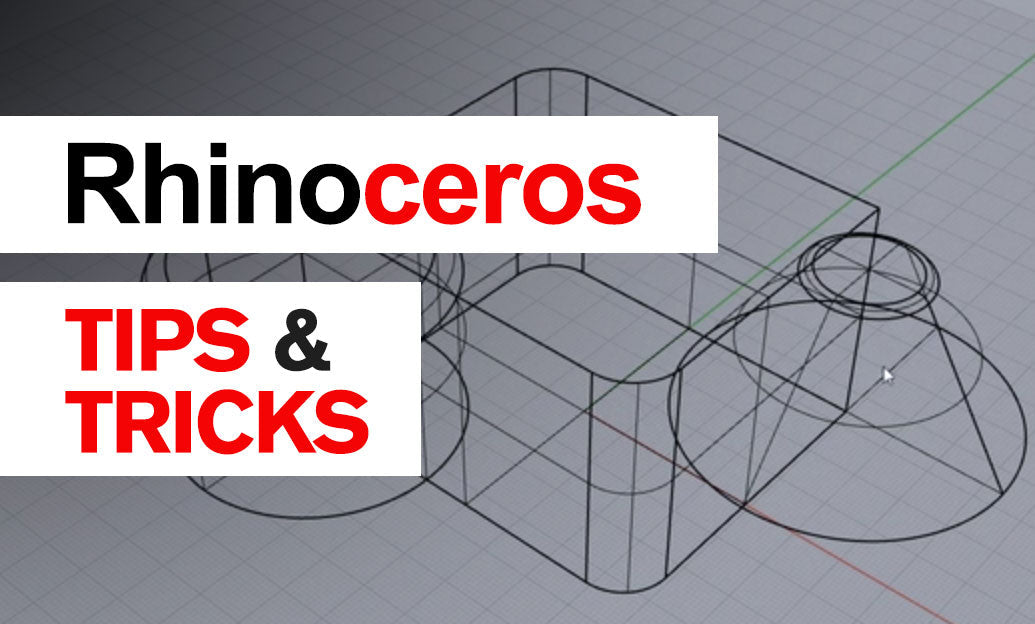Your Cart is Empty
Customer Testimonials
-
"Great customer service. The folks at Novedge were super helpful in navigating a somewhat complicated order including software upgrades and serial numbers in various stages of inactivity. They were friendly and helpful throughout the process.."
Ruben Ruckmark
"Quick & very helpful. We have been using Novedge for years and are very happy with their quick service when we need to make a purchase and excellent support resolving any issues."
Will Woodson
"Scott is the best. He reminds me about subscriptions dates, guides me in the correct direction for updates. He always responds promptly to me. He is literally the reason I continue to work with Novedge and will do so in the future."
Edward Mchugh
"Calvin Lok is “the man”. After my purchase of Sketchup 2021, he called me and provided step-by-step instructions to ease me through difficulties I was having with the setup of my new software."
Mike Borzage
Integrating Haptic Feedback: Revolutionizing Design Software with Tactile Interactions
July 18, 2025 8 min read


Foundations of Haptic Feedback in Design Software
Haptic feedback technology has revolutionized the way professionals interact with design software across many industries. At its core, haptic feedback provides tactile sensations that simulate the sense of touch, and this feature has become a critical asset in modern design applications. In contexts where precision and realism are essential, such as **industrial design** and architectural visualization, haptic feedback facilitates intuitive interactions with digital models. By translating digital inputs into physical sensations, designers and engineers can evaluate textures, shapes, and material properties more realistically. Over time, technological progress has driven the evolution from primitive tactile interfaces to cutting-edge haptic systems integrated within high-end design platforms.
Historical Overview and Evolution
The historical journey of haptic technology is marked by a series of transformative milestones. Early iterations emerged alongside the development of computer technology in the mid-twentieth century, providing rudimentary tactile feedback for exploratory user interface experiments. With advancements in electronics and material science, early tactile devices gave way to more sophisticated systems capable of delivering nuanced sensory experiences. Several key milestones – from the development of force feedback joysticks to the creation of immersive VR environments – cement the role of haptics in user design interactions. Notably, the convergence of computer graphics and haptic technology has spawned numerous innovative applications that blur the boundaries between physical and virtual realities.Cross-Disciplinary Impact
The cross-disciplinary impact of haptic feedback manifests in its wide-ranging applications that span **design**, engineering, and user interaction. This technology is instrumental in transforming traditional workflows by enabling:- Improved tactile simulation in product design
- Enhanced accuracy and precision in architectural modeling
- More immersive and interactive experiences in virtual reality platforms
Technical Integration & Operational Mechanisms
Integrating haptic feedback into design software requires the harmonious coordination of several technical components, including specialized haptic devices, precision sensors, and robust software APIs. At the heart of these systems, high-resolution sensors capture subtle user inputs and translate them into digital signals, while custom software APIs facilitate communication between haptic hardware and the design environment. The integration approaches vary widely, from straightforward plug-in modules to complex middleware solutions interfacing directly with native software features. Many design tools now offer built-in support for haptic feedback, ensuring that tactile simulation is accessible to a broad array of users engaged in high-fidelity rendering and simulation tasks.
Key Components of Haptic Integration
To achieve a seamless union of tactile experiences and digital design, developers must manage several key components:- Haptic Devices: These are physical instruments such as gloves, styluses, or robotic arms capable of providing multi-dimensional force feedback.
- Sensors: Precision sensors measure aspects like pressure, angle, and motion, ensuring that the system accurately reproduces the physical dynamics of user interactions.
- Software APIs: Specialized interfaces allow haptic devices to communicate with design software, enabling real-time feedback loops that enhance user immersion.
Challenges in Integration
Despite the benefits, integrating haptic feedback presents several engineering challenges:- Latency Issues: Physical responses must be near instantaneous, demanding highly optimized code and priority-based processing.
- Precision and Sensitivity: Achieving the level of detail necessary for realistic feedback often requires sophisticated sensor calibration and fine-tuning of control loops.
- Compatibility: The varied ecosystem of design tools and devices means that software must be highly adaptable, often relying on middleware solutions to bridge gaps.
Real-World Applications & Industry Use Cases
The practical applications of haptic feedback have extended well beyond theoretical research, finding their place in numerous industries where tactile simulation enhances both functionality and user engagement. One of the primary arenas for haptic technology is **product visualization**, where designers rely on the sense of touch to evaluate the ergonomic and aesthetic qualities of prototypes. By using haptic-enabled devices, designers can simulate various material properties, assessing textures and resistance as they would in the actual product. This approach not only improves the design validation process but also aids in optimizing user experience and functionality, especially in domains such as consumer electronics and automotive design. In environments like architectural walkthroughs and virtual reality design reviews, incorporating haptic feedback transforms passive observation into active, multi-sensory experiences.
Expanding Tactile Simulation in VR and Additive Manufacturing
In VR-enhanced design reviews, haptic feedback augments visual immersion by providing a tangible layer of interaction. This is particularly crucial in scenarios where designers need to simulate the feel of different construction materials during architectural walkthroughs. Haptic systems allow users to interact dynamically with their digital environments, making adjustments to virtual prototypes based on tactile assessments. Moreover, the integration of haptic feedback in additive manufacturing workflows has opened new avenues for tactile simulation. Designers can now incorporate real-time physical feedback when manipulating models destined for 3D printing or CNC machining. This melding of digital and physical design not only improves precision but also fosters a deeper understanding of material properties during the early stages of design.Implementation in Design Validation Processes
**User experience** is significantly enhanced when haptic feedback is employed in design validation. The tactile response provided by these systems simulates the physical characteristics of a design, allowing engineers and designers to:- Evaluate ergonomics by experiencing realistic force distributions.
- Fine-tune material properties by testing virtual prototypes.
- Engage in iterative design processes that mirror physical prototype testing.
Challenges, Future Trends, and Best Practices
With the expanding integration of haptic feedback in design environments, several challenges continue to shape its development and future trajectory. Among these, hardware costs remain a significant barrier to universal adoption, as high-quality haptic devices require substantial investment. Software complexity adds another layer of difficulty, particularly when integrating haptic systems with legacy design platforms. Furthermore, user adaptation is an ongoing challenge; transitioning from traditional mouse-and-keyboard interactions to multi-sensory interfaces necessitates comprehensive training and gradual workflow adjustments. In this context, the most successful integrations are those that highlight both the tangible benefits and the enhanced user experience offered by haptic feedback, fostering an environment where technology and creativity merge seamlessly.
Predicting Future Trends in Haptic Feedback
The future of haptic feedback is poised to be shaped by several exciting trends. First, advancements in material simulation promise to deliver unprecedented levels of realism in digital environments. **Advanced material simulation** techniques could enable designers to experience subtle variations in texture and compliance that mimic real-world conditions with remarkable accuracy. Additionally, the convergence of artificial intelligence with haptic technology is expected to pave the way for AI-driven haptic responses that adapt dynamically to user inputs and environmental conditions. Such innovations could further enhance the responsiveness and intuitiveness of design interactions. Lastly, as the broader industry recognizes the tangible benefits of haptic integration, we can expect greater adoption across sectors, driving economies of scale that gradually reduce hardware costs and inspire further technological improvements.Establishing Best Practices for Developers and Designers
To ensure successful incorporation of haptic feedback, developers and designers should consider several best practices that have emerged through practical experience. These include:- Comprehensive Testing: Rigorous evaluation of latency, precision, and reliability is crucial for maintaining high standards of realism.
- Iterative Design: Incorporate user feedback continuously to refine haptic responses and adjust interface sensitivities.
- Cross-Disciplinary Collaboration: Foster cooperation among hardware engineers, software developers, and UX designers to facilitate seamless integration.
Conclusion
The integration of haptic feedback into design software represents a transformative shift in how we engage with digital environments. This technology not only enhances the sense of touch in digital simulations but also bridges the gap between virtual and physical experiences, thus reshaping **design processes** and engineering validation. By enabling designers to interact with their work in multi-dimensional ways, haptic feedback contributes significantly to improved product visualization, refined material simulation, and heightened ergonomic testing.
Recap and Forward-Looking Insights
In summary, haptic feedback has evolved from early tactile interfaces to become a sophisticated component in modern design software ecosystems. As we have explored, the integration of this technology is complex yet critically important, requiring orchestration among specialized hardware, advanced sensors, and robust software interfaces. Practical applications across product visualization, VR-enhanced design reviews, and architectural explorations illustrate the substantial benefits of a multi-sensory design approach. Furthermore, current challenges such as hardware cost, software intricacy, and user adaptation set the stage for future breakthroughs. The ongoing fusion of AI-driven responses and advanced materials simulation promises to further refine how designers interact with their digital tools.Looking Ahead to Continuous Evolution
As we look to the future, industry adoption of haptic feedback is expected to surge as best practices continue to evolve and technology becomes more accessible. Incremental improvements in hardware affordability and software efficiency will drive innovation in immersive design experiences. In turn, these advancements will not only streamline design validation but also elevate user interactions to previously unimaginable levels of realism and precision. Embracing these changes, both developers and designers must remain committed to experimenting with new methodologies and refining existing systems. By fostering an environment where tactile feedback is seamlessly integrated into the overall design workflow, the industry is poised to achieve a new era of creativity and technical excellence. The potential of haptic feedback to revolutionize design software is immense, and its role in the future of digital interactions is certain to grow, inspiring creative solutions and advanced workflows across all domains.Also in Design News

Rhino 3D Tip: Rhino to Real‑Time Engines: Clean Models, Optimized Meshes, Reliable Exports
December 07, 2025 2 min read
Read More
Cinema 4D Tip: Constraint-Based Animation with PSR, Parent, and Aim
December 07, 2025 2 min read
Read More
V-Ray Tip: Proximity Dirt and Wear Masks with VRayDistanceTex
December 07, 2025 2 min read
Read MoreSubscribe
Sign up to get the latest on sales, new releases and more …


